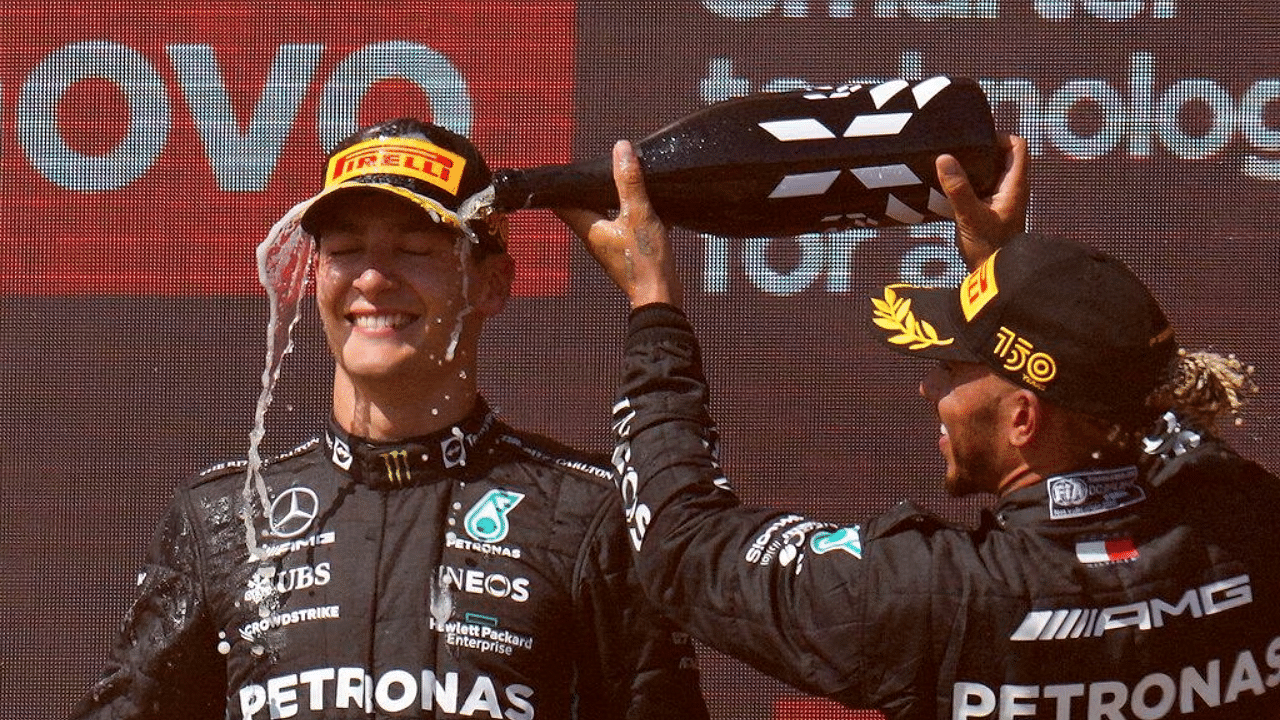After 90 minutes of high-speed racing, the checkered flag drops as the drivers cross the line to determine their fate on the scoreboard. The chase to the F1 podium pushes the driver from lights out; the sweet taste of victory on the biggest stage of motorsport- is actualized with the iconic Ferrari champagne.
Ferrari Trento, in its classy, sleek bottle, has featured on the podium since the 2021 season. More specifically, the Jeroboam bottle of Ferrari Trento is what gives those grand champagne showers their beauty.
All the details behind the exquisite champagne
Earlier the bottle size was a Magnum, filled with 1.5 liters of sparkling wine- equivalent to the size of 2 standard bottles, almost 16 glasses. Now it’s Jeroboam, which is a whopping 3 liters, almost 4 bottles worth of bubbly. The brand will continue with F1 till 2025, keeping the drivers tipsy and happy after an extreme race to the top.
View this post on Instagram
The common man can purchase a standard Ferrari Trento F1 bottle for around $36. However, the real deal, the Trento F1 Jeroboam costs a cool $360.
What alcohol is used in Middle-Eastern countries?
The expensive elixir isn’t featured in all races as sometimes countries don’t allow champagne on the podium. Middle-Eastern countries like Saudi Arabia, Bahrain, and Abu Dhabi forbid the use of alcohol. Hence, a substitute is required.
Instead of the champagne, drivers are given Waard- which is sparkling rosewater. This is a bubbly blend of rosewater, grenadine, sugar, and lemon water- respecting the rules of these countries without breaking the tradition carried in F1.
History of champagne in F1
The F1 Champagne saga started when Moët & Chandon was first popped on podiums worldwide between 1966 and 1999. In 2020, it returned with Jeroboams. G.H. Mumm Champagne then took over from 2000 to 2015.
also read: F1 Steering Wheel: How Does Lewis Hamilton’s Formula 1 Steering Wheel Work?
In 2016, Chandon entered the scene, appearing on the nosecone of the McLaren Honda cars, but it ended its run on the Circuit de Catalunya in Spain in 2017.
View this post on Instagram
Champagne Carbon then took over at Monaco and prevailed on the podium until 2019, with each magnum bottle costing almost $2,888. These bottles contained the Millésime 2009 Grand Cru Blanc de Blanc, made entirely from Chardonnay grapes. Now, Ferrari has taken over the scene and will continue till 2025.
Who started the champagne-spraying tradition in F1?
In 1950, the first bottle of Champagne was uncorked on a Formula 1 podium at the Reims-Gueux circuit during the French Grand Prix. Fast forward to 1967, and the Ford GT40 duo of Dan Gurney and A. J. Foyt shocked everyone with their remarkable teamwork, winning the 24 Hours of Le Mans.
View this post on Instagram
As Gurney stood atop the podium with his fellow Ford team members, he was presented with a Magnum bottle of Moët & Chandon Champagne.
Overcome with joy and exhaustion. Gurney sprayed everyone around him with the bubbly nectar, including CEO Henry Ford II and team owner Carroll Shelby. This spontaneous act of celebration ignited a trend that soon became a beloved tradition in the racing world.




